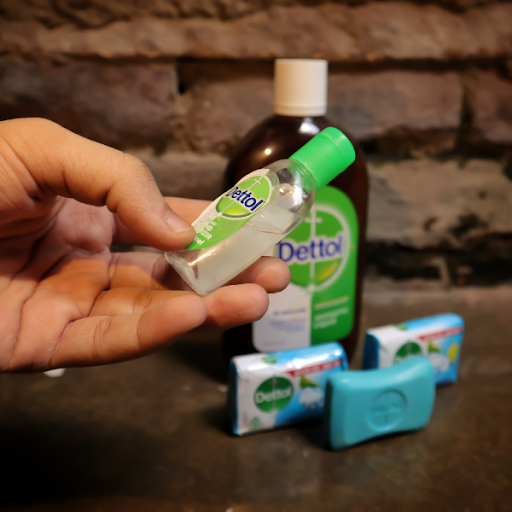How to break the chain of infections?
You are always surrounded by different types of germs that can cause infections in your body. But, unlike viruses and bacteria, germs usually spread from person to person through a particular sequence of events.
Regardless of the type, all germs follow a 6 step process, which, if interrupted, allows you to prevent them from spreading. These steps include the infectious agent, reservoir, portal of exit, means of transmission, portal of entry, and a susceptible host.
To prevent the spread of germs and break the chain of infection, you can interrupt the sequence of events at any point.
Transmission modes
1. Contact transmission
Contact transmission occurs when a person physically encounters an infected person or a contaminated object. It happens in two ways:
- Directly coming into physical contact with an infected person.
- Directly coming into physical content with an object contaminated with germs.
When a person is infected with germs, coughs, or sneezes, respiratory droplets can land on various surfaces around them. When other people touch these surfaces, their hands can get contaminated with thousands of hazardous germs their health.
They can quickly get infected with these contaminated hands when they touch their eyes, nose, or mouth. Therefore, you must maintain good hygiene in public places to protect yourself and others.
2. Droplet transmission
Droplet transmission occurs when an infected individual coughs, sneezes, or talks, leading to tiny respiratory droplets entering another person’s system through their eyes, nose, or mouth.
3. Airborne transmission
Airborne transmission occurs when small contaminated particles (<5um in size) in the air are inhaled by a person’s respiratory system. According to research, some viruses, such as Coronavirus, can remain in the air for up to 3 hours.
Chain of infection
Some specific conditions must be met for a microbe or infectious disease/agent to spread from one person to another. This process is commonly known as Chain of Infection.
There are six steps in the process, and transmission will only occur if all of them are fulfilled.
1. Infectious Agent
Microorganisms (germ, virus, bacteria) that cause harmful infections.
Reservoir
A source or host. This is where the microorganism lives, grows and multiplies. Humans, animals, and different surfaces are all examples of reservoirs.
2. Portal or Exit
A path or exit way for the microorganism to leave the host. Coughing, sneezing, talking, or breathing are all examples of exit points.
3. Mode of Transmission
The method through which the infectious agent is transmitted from one individual to another. It can be in the form of respiratory droplets, physical contact, or airborne transmission.
4. Portal or Entry
A place for the microorganisms to enter into a new host.
5. Susceptible Host
Children and old age individuals are typically more susceptible to the infectious agent. Thus, old age people and children require extra protection these days because their immune system is weak and vulnerable to germs, viruses, and bacteria.
Breaking the chain of infection
To break the chain of infection, World Health Organization recommends employing basic hygiene principles, like standard and transmission-based precautions.
Hand hygiene
Regularly washing your hands with warm water, antibacterial soap, or liquid hand wash for at least 20 seconds is the most productive way to prevent you or your loved ones from getting infected.
Knowing when and how to wash hands properly can help you stay safe from microorganisms that can quickly spread infections and damage your immune system.
If water and soap are unavailable, using an antibacterial hand sanitizer that kills 99.99% of germs is recommended.
Cough and sneeze etiquette
As respiratory droplets can travel up to 2 meters through the air, the following steps can help reduce the risk of germs spreading while coughing and sneezing.
- Adequately cover your mouth and nose with a tissue while coughing or sneezing. After use, dispose of the tissue immediately. If tissue is unavailable, cough or sneeze into the crevice of your elbow.
- Medical experts advise washing your hands immediately after coughing or sneezing.
Routine environmental cleaning
It is also essential to be mindful of the surfaces we touch regularly and keep them clean and disinfected. Finally, never underestimate the importance of frequently cleaning the house, as it reduces infection transmission risk.
Clean and disinfect regularly touched objects and surfaces such as doors, handles, tables, chairs, electronic devices, keys, wallets, etc. Use multisurface disinfectant products and antiseptic liquid to eliminate the germs on them.
Ventilate your home
Poor ventilation can invite several infectious diseases into your house. Keep your windows open so that fresh air can circulate through the house. If you have installed air conditioning or heat pump systems, maintain them and clean their filters regularly.
You should also use long-lasting fresh breeze air fresheners that eliminate bacterial odors from the air keeping your home clean and pure.
